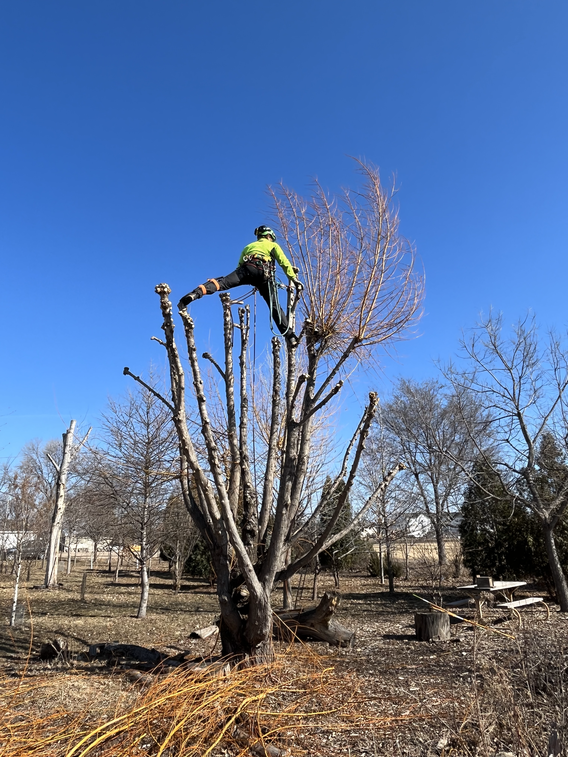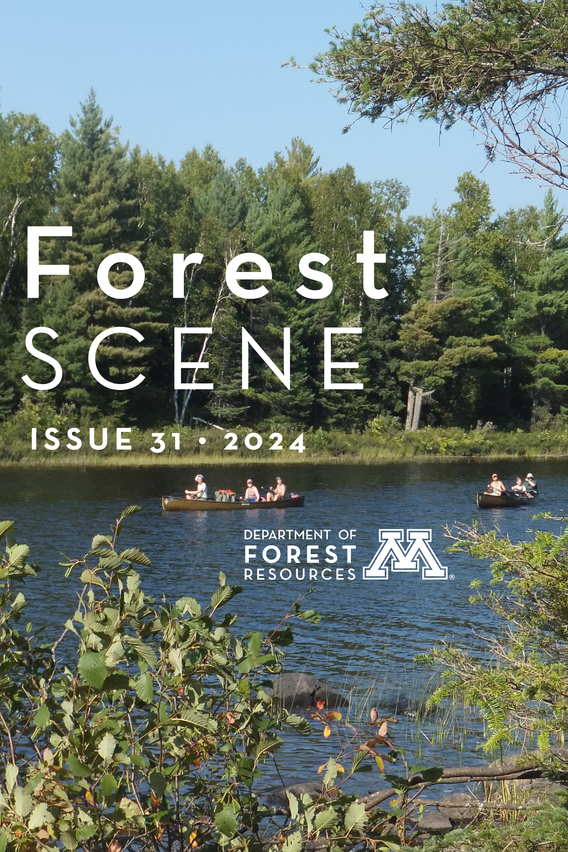This article is part of the Forest Scene newsletter, Issue 31.

Did you know beavers, porcupines, tapirs, and forestry folk share something in common? Turns out, we all love a good tree branch!
Luckily, the Urban Forestry Outreach and Research (UFOR) team has been able to put this information to good use. For the past two years, they've provided the Minnesota Zoo with tree trimmings for animal habitats. It's all thanks to the decision to pollard prune a willow tree in their nursery on the UMN-Twin Cities campus in St. Paul.
Last March, Dan Gjertson, UFOR arboriculture program coordinator and educator, pruned a truck-bed full of willow branches for the this purpose. As a thanks, Minnesota Zoo Animal Nutritionist Kelly Kappento shared photos of the branches placed in the beaver habitat and being enjoyed by its occupants.
What is pollard pruning?

UFOR nursery. Photo by Theo Keenen.
Because willow trees can become quite large and sprawling, and are prone to shedding limbs due to their weak-wooded nature, arborists in urban spaces may want to limit their growth. On the UMN campus in St. Paul, UFOR’s willow plantings are adjacent to a parking area, where dropped limbs could hurt people and vehicles. In this case, pollard pruning, a common European practice, helps to prevent future disasters.
Pollarding is done during dormancy. It involves removing every shoot from the tree’s scaffold limbs at the main stem or trunk, thus maintaining the tree’s size and shape while also creating a unique sculptural appearance. This pruning practice should be done regularly, about every 1 - 2 years, depending on the tree species and growth rate.


The Forest Scene newsletter is published biannually in the spring and fall, featuring stories and updates from the Department of Forest Resources. Read Issue 31 (2024):
- Department Message from Kristen C. Nelson
- Recommended Reading
- UMN-Twin Cities Designated as Tree Campus in Higher Education
- Faculty Retirement: Andy David
- Prions in MN Waterways: Discovery Helps Water Managers Plan
- Supporting Sustainable Agroforestry in Guatemala
- Graduate Research Highlight: Luiza Lucena
- News Bites:
- From Our Archives
- In Remembrance
